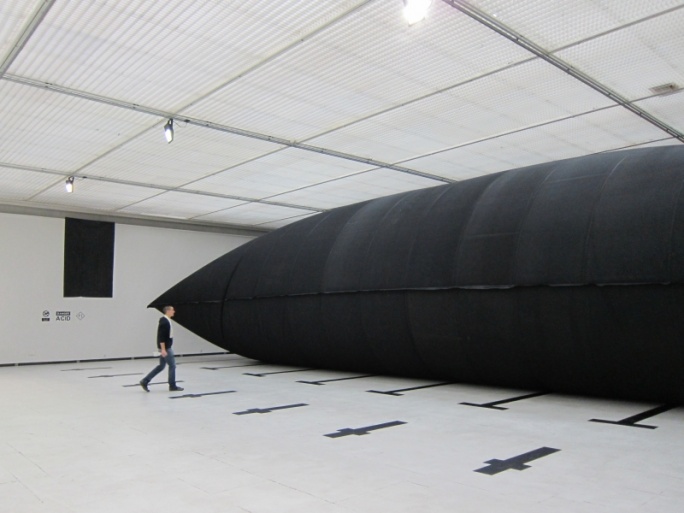Valdas Ozarinskas
Described as a practician and visionary, Valdas Ozarinskas (1961-2014) mixes the latest scientific ideas, technological advances, and a cosmic imagination to express his political stance in an undeclamatory way. The unique phenomenological experiences (the size, form and material quality of the objects) present in his works astound viewers, while the combinations of domesticated industrial objects in his installations with their extended functions and significance can cause surprise because of their use in an unexpected context.
Ozarinskas creates conceptual art projects, exhibition design and conceptual architecture, often working together with the Private Ideology (Lith. Privati ideologija) group, of which he himself is a member. In collaboration with them, he designed the Lithuanian pavilion at Expo 2005 (Aichi, Japan), creating a spatial DNA molecule spiral of moving images, with news items from the Lithuanian Television archive, as a multi-screen code of the country’s life. The work was awarded the LT Identity Prize.
In his recent works, Ozarinskas has tackled institutional criticism and socio-political commentary, while flirting with the history of art and discovering new exhibition formats. In one case, he installed his huge inflatable Black Pillow in an art exhibition space. In another, he devised a project as a flyer for a future exhibition, a survey of Lithuanian contemporary art: he invited independent Lithuania’s top athlete, the Olympic champion discus thrower Romas Ubartas, to throw a discus at a wall, leaving a ‘scar’ on the wall of the white cube, while the news media looked on (Romas Ubartas, CAC, Vilnius).
Ozarinskas works as the exhibition architect at the Contemporary Art Centre in Vilnius. The foyer (2006) and the cinema auditorium (2012) are among his significant contributions to the interior design of the CAC. He has participated in the Baltic Triennial of International Art (2002, Vilnius), the Liverpool Biennale (2012), and was awarded the Hansabank Art Award (2006).
